#Soccorso Church
Explore tagged Tumblr posts
Photo

Exhibit V.
#1991#8thOfAugust#working#the way to new project#i want make record near the sea#reef?#Waves#Stolen Sound#Forio D'Isciha#46#Home Studio#Soccorso Church#Ischia roots#from Baron Castle Studio#Napoli#We Are Made 4 Dub#Ischia dint'o core#TOTAN LAB.#BAERHARD#DUB#Pete Namlook#FAX+49-69/450464#Techon-Ambient#Dub-Techno#Drone-Music#drone#secret location#the dream#the Island
0 notes
Photo
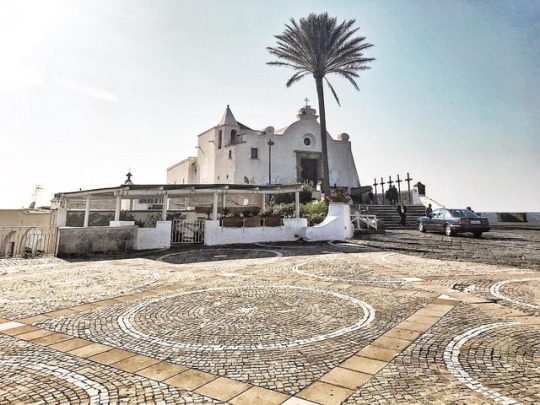
#iphone7plus #soccorso #church #ischia #italy #sky #prospective #horizon #summer #travel #palm #photography #instatravel #foriodischia (presso Chiesa Soccorso Forio di Ischia) https://www.instagram.com/p/BnD-1S3grTh/?utm_source=ig_tumblr_share&igshid=fb1z0ssrd6np
#iphone7plus#soccorso#church#ischia#italy#sky#prospective#horizon#summer#travel#palm#photography#instatravel#foriodischia
1 note
·
View note
Text
Our Lady of Fatima 105th Anniversary of the First Apparition, Madonna del Soccorso / Our Lady of Succour of Sicily (14th Century), Our Lady of the Most Blessed Sacrament and Memorials of the Saints - 13 May
Our Lady of Fatima 105th Anniversary of the First Apparition, Madonna del Soccorso / Our Lady of Succour of Sicily (14th Century), Our Lady of the Most Blessed Sacrament and Memorials of the Saints – 13 May
St Robert Bellarmine SJ (1542-1621) Doctor of the Church, Confessor.Feast Day today. changed in 1969.Biography:https://anastpaul.com/2017/09/17/saint-of-the-day-17-september-st-robert-bellarmine-s-j-doctor-of-the-church/ 13 May 2022 +++ Our Lady of Fatima 105th Anniversary of the First Apparition Our Lady of the Holy Rosary (the name she gave herself when Lucia asked her name). All about Our…

View On WordPress
#blimeldalambertini#bljulianofnorwich#ourladyoffatima#ourladyofsuccourofsicily#ourladyofthemostblessedsacrament#saints13may#standre-hubertfournet#strobertbellarmine
4 notes
·
View notes
Photo

Tiezzi Brunello di Montalcino DOCG "Vigna Soccorso" (2015) This wine, which shows classic intense aromatics, with elegant and layered textural complexity in the palate, is made of 100% Sangiovese (Brunello) grapes grown exclusively in the vineyards of Podere Soccorso, near the church of the Madonna del Soccorso, just a stone’s throw from the old town of Montalcino. Adjacent to the 14th century walls and the Sanctuary of the Madonna del Soccorso, named in honor of the Patron Saint of the people Montalcino, the traditionally “alberello” trained, southwest-facing vineyard is found at an altitude of about 500 m above sea level. The soils in the Soccorso vineyard are silty/sandy, peppered with some heavy stones and volcanic rocks. The vineyard looks like a storybook-styled garden set on hand-built stone-lined steps, adorned with roses at the end of every row of bush vines. Traditional. Authentic. Delicious. #enzotiezzi #tiezzi #poggiocerrino #vignasoccorso #wine #wine #winelover #italianwine #winesofitaly #oinoslogo #viniditalia #brunellodimontalcino (at Wine Bar George) https://www.instagram.com/p/CTcvvrBLpeH/?utm_medium=tumblr
#enzotiezzi#tiezzi#poggiocerrino#vignasoccorso#wine#winelover#italianwine#winesofitaly#oinoslogo#viniditalia#brunellodimontalcino
1 note
·
View note
Photo

Nuovo post su http://www.fondazioneterradotranto.it/2019/05/15/97833/
La Madonna degli Angeli per la cappella dei d’Amato di Seclì della chiesa di San Domenico a Nardò
Riportiamo gli abstract dei saggi pubblicati sul nuovo numero de Il delfino e la Mezzaluna
Nicola Cleopazzo, E Napoli cominciò a fare scuola nel Salento
in Il delfino e la Mezzaluna, Periodico della Fondazione Terra d’Otranto, anno VI, n° 8, 2019, pp. 137-163
ITALIANO
Nel saggio, attraverso la rilettura di un atto notarile, già pubblicato nel 1891 e collegato ora a dati storici nel frattempo emersi, viene dimostrato che il pittore napoletano Aniello Laudisello realizzò nel 1590 una grande pala con la Madonna degli Angeli per la cappella dei d’Amato di Seclì della chiesa di San Domenico a Nardò. Un arrivo da Napoli, a cui altri se ne possono aggiungere (come una pala a Racale qui attribuita a Giulio Dell’Oca), che poté avere un ascendente diretto sui maggiori pittori salentini del periodo: Donato Antonio D’Orlando e Gian Domenico Catalano. Alcuni dei caratteri stilistici dei due salentini, a cui vengono restituiti rispettivamente due dipinti a Casarano e Racale, sembrano infatti risentire del contesto culturale partenopeo del terzo quarto del Cinquecento, di cui il Laudisello fu uno dei protagonisti. Contesto, dominato dalla fortunata bottega Lama-Buono, cui sembra appartenere anche una Madonna del Soccorso a Gagliano del Capo, qui restituita a un altro pittore napoletano, Decio Tramontano, forse con la collaborazione del maddalonese Pompeo Landolfo.
ENGLISH
In the essay, through the analysis of a notary’s act, already published in 1891 and now connected to new historical information, it is shown that in 1590 the Neapolitan Aniello Laudisello painted a large altarpiece
with the Virgin of the Angels for the d’Amato (Seclì’s barons) chapel in the church of San Domenico in
Nardo. This arrival from Naples, to which others can be added (like an altarpiece from Racale here attributed to Giulio Dell’Oca), had probably a direct influence on the main Salento painters of the time: Donato Antonio D’Orlando and Gian Domenico Catalano. Some of the stylistic features of the two Salentines, to which two paintings from Casarano and Racale are respectively attributed, seem to be influenced by the Neapolitan cultural context of the third quarter of the sixteenth century, of which Laudisello was one of the protagonists. To this context, dominated by the successful Lama-Buono workshop, also a Madonna del Soccorso from Gagliano del Capo seems to belong. Here this painting is attributed to another Neapolitan painter, Decio Tramontano, perhaps with the collaboration of Pompeo Landolfo from Maddaloni.
Keyword
Nicola Cleopazzo, Aniello Laudisello, Antonio D’Orlando, Gian Domenico Catalano, Decio Tramontano, arte
#Aniello Laudisello#Antonio Donato D'Orlando#D'Amato#Decio Tramontano#duchi di Seclì#Gian Domenico Catalano#Il delfino e la mezzaluna#Nicola Cleopazzo#Arte e Artisti di Terra d'Otranto#Spigolature Salentine
1 note
·
View note
Photo
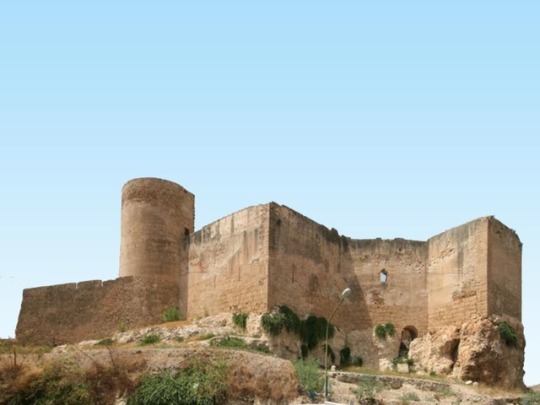
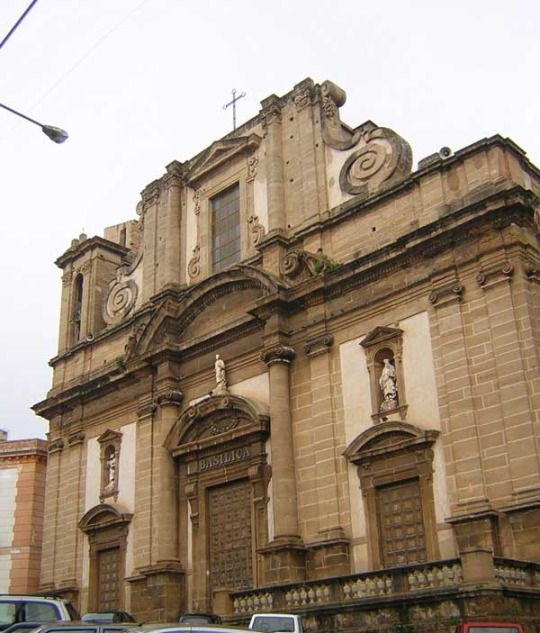

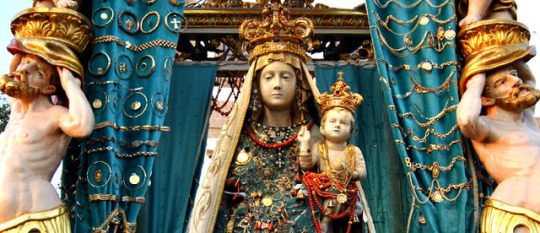

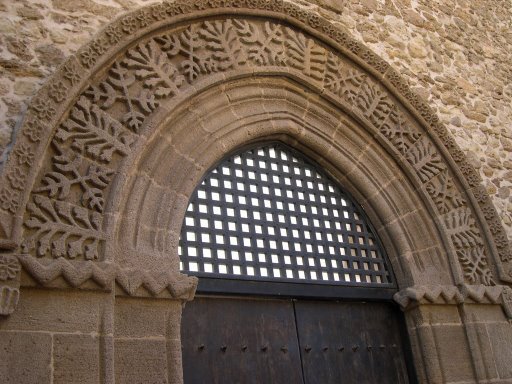




SCIACCA - Castello Luna, Duomo Santa Maria Del Soccorso, interno del Duomo, Madonna del Soccorso, Chiesa del Carline, San Gerlando, Frontone ex chiesa Santa Margherita, Organo La Grassa ex chiesa Santa Margherita, interno ex chiesa Santa Margherita, Sciacca vista dal mare.
Sciacca è figlia dell’antica Selinunte. L’antica città greca aveva in prossimità del mare delle terme in cui la temperatura era costantemente a 40° e di questo gli antichi greci ne approfittavano per guarire malattie o prevenirle. Scomparsa Selinunte distrutta dai cartaginesi, lentamente Sciacca crebbe da sola, grazie alla sua importanza come unico porto sicuro su un lungo tratto di costa. Per questo tutti i dominatori della Sicilia ebbero cura di fortificarla ed abbellirla. Così, chi viene dal mare e vede solo una china di case che salgono dal porto, non immagina le tante chiese che la principessa normanna Giuditta fece costruire una volta liberata dagli arabi, né immagina la sua storia fatta di lotte ed intrighi, di un castello distrutto ed un’ altro fatto fortificare dai conti Luna grandi signori del tempo. Né può mai immaginare la bellezza del Duomo o della chiesa sconsacrata di santa Margherita con il suo prezioso organo fatto dal maestro La Grassa e si sente disorientato tra il poco barocco che qui vede rispetto ad altre città siciliane ed il tanto stile romanico o gotico-catalano che si nota nelle varie chiese. Ma il segreto di Sciacca lo capisci durante la festa della Madonna del Soccorso quando vedi la statua della Madonna ornata con prezioso e rosso corallo pescato e lavorato in luogo. Allora capisci che come il corallo, Sciacca ha un cuore antico ed una veste nobile, la ricchezza lasciata dal tempo e da innumerevoli conti principi e marinai che di Sciacca sono stati i degni figli.
Sciacca is daughter of the ancient Selinunte. The ancient Greek city had near the sea of the baths in which the temperature was constantly at 40 ° and of this the ancient Greeks took advantage to heal diseases or prevent them. Disappeared Selinunte destroyed by the Carthaginians, Sciacca slowly grew by itself, thanks to its importance as the only safe haven on a long stretch of coast. This is why all the rulers of Sicily took care to fortify it and embellish it. So, those who come from the sea and see only a slope of houses that rise from the port, do not imagine the many churches that the Norman princess Giuditta built once freed by the Arabs, or cannot imagine its history of struggles and intrigues, a castle destroyed and another made to fortify by the great lords Counts Luna. Nor can you ever imagine the beauty of the Cathedral or the deconsecrated church of Santa Margherita with its precious organ made by the master La Grassa and feel disoriented between the baroque that here do not appear compared to other Sicilian cities and the much Romanesque or Gothic-Catalan style that you notice in the various churches. But you understand the secret of Sciacca during the festival of the Madonna del Soccorso when you see the statue of the Madonna adorned with precious and red coral fished and worked in place. Then you understand that like the coral, Sciacca has an ancient heart and a noble robe, the wealth left by time and countless counts of princes and sailors who have been the worthy sons of Sciacca.
35 notes
·
View notes
Photo

The parish church of Bormla (Cospicua), in the South Eastern Region of Malta. The church is dedicated to the Immaculate Conception. Il-knisja kolleġġjata perinsinji tal-Immakulata Kunċizzjoni li sservi bħala l-paroċċa ta’ Bormla. ORIGINS It would seem that the first church in Bormla was the medieval church built in gratitude of an apparition of Our Lady in the 14th century. It was dedicated to the Holy Mary under the title of ‘tas-Sokkors’ (Del Soccorso), while others attribute it to St. Helen (Santa Liena). This church fell under the Birgu parish, more-so during the time of the Great Siege (16th century) when the population of Bormla was drastically reduced to around 1,200 inhabitants after Grand Master la Valette ordered that many of Bormla’s houses be demolished so that they couldn’t be used for refuge by the enemy invaders. BORMLA BECOMES A PARISH Bormla became a parish in 1586 following a request made by procurator Mons. Pietru Franġisku Costa. The first parish church was a small church situated on the hill known as “the hill of the gardens” (l-Għolja tal-Ġonna) This church had been enlarged at the end of the 15th century, but after the Great Siege of 1565, the population started increasing so it was decided to enlarge the church of Our Lady of the Immaculate Conception tas-Sokkors, as it became known, in 1627. In around 1686, it started being slowly rebuilt so that it would take the shape of the church we find present today. Although we are not certain who exactly built the present church, it would seem that the architect Ġużeppi Bonnici started the work and that the designs were done by Vincenzo Casanova. BUILT SLOWLY Owing to the disastrous effects of the plague, years of drought, poverty, as well as delayed decisions on design elements, the church took a number of years to get built. In fact, it is believed that the church was not entirely finished until 1735. Read the full article here https://www.facebook.com/photo?fbid=472994194182395&set=a.213036866844797 (at Cospicua Parish Church) https://www.instagram.com/p/CYrKoM_Iq5a/?utm_medium=tumblr
0 notes
Photo

🤔 Sbagliando si impara... seh! Avessi memorizzato una volta che non devo fissare video interviste alle 12 🤷🏻♀️! Nel mio quartiere son più chiese ⛪ che palazzi! Alle 12 🔔 scoccano tutte le campane 😂😂😂 . Quando pensi che tutto sia finito arrivano le #sirene 🚨 varie di veicoli di soccorso. In pratica un concerto 🎸! E vabbeh in smart working i rumori di casa fanno folclore vero? A voi è mai capitato? PS: alla fine l'intervista è andata... Ma non assicuro siano senza rumori di sirene #crazy #loud #sound #bell #bells #rumori #suoni #church #campana #work #smartworking #homeworking #red #rome #roma #backstage #funny #mezzogiorno #midday #noon https://instagr.am/p/CNH_icsjWo_/
0 notes
Photo

Il campanile della Chiesa della Beata Vergine del Soccorso (detta "La Rotonda" ) che sarebbe stato progettato da Baldassarre Longhena, architetto di notevole fama nel 1600 veneto e di cui Rovigo detiene l'unica struttura da lui progettata e che, per alcune parti, pare richiamare il campanile di San Marco a Venezia. Il campanile, alto 57 metri, è saldamente fissato al terreno di sabbia compatta da una massiccia base a scarpata di 2 metri di altezza . La struttura rossa è poi ben delineata da cornici bianche. La struttura rodigina presenta poi finestrelle asimmetriche lungo tutta l'ascesa del campanile le quali danno segno di vivacità allo stesso nonché di luminosità. La croce posta alla sommità è alta 4 metri. . La chiesa, a base ottagonale, risale alla fine del '500 quando Rovigo da oltre un secolo era già parte della Repubblica di Venezia. L’edificio fu costruito per conservare degnamente e onorare un’immagine della Madonna su cui si era concentrata la devozione popolare e che era affrescata in un piccolo oratorio costruito lungo la recinzione dell’orto dei frati Minori Conventuali di S.Francesco nella zona orientale della città . ➡️ Per un'accurata e molto interessante descrizione di questa perla rodigina, si veda la pagina di Wikipedia . . . . . #Rovigo #igersrovigo #igersveneto #church #volgorovigo #larotonda #towerbell #chiesa #madonna #veneto #madeinitaly #ig_veneto #bestvenetopics #campanile #volgoarte #beniculturali30 #architecture #architecturelovers #sky #art #letsguide #loves_veneto #loves_united_church #shotz_of_veneto — view on Instagram http://bit.ly/2JcsuWw
0 notes
Text
Feste e Tradizione
We were privileged be at the festa held in honour of the Madonna del Perpetuo Succorso, in the tiny town of Soccorso, in the hills above Milazzo.
The bunting was out

The altar was ready in the church

The snack stands just waiting for business


The church bell tolls, balloons are released


And the Madonna, all 800 odd kilos of her, starts her annual pilgrimage around the village on the shoulders of the willing and able, led by the Women's Guild and followed by a brass band, the Priest, Mayor, dignitaries and townsfolk.




The Madonna reaches the piazza after her first circuit and fireworks explode, it's so loud you can't believe it! The shock waves travel up your arms and your heart almost stops!

Off she goes again for a different circuit of the village as night falls


The festival lights come on and you leave, knowing that the Madonna will be visiting more narrow, cramped streets for a few more hours yet before being able to return to her church

0 notes
Text
Hi everyone! Today I want to bring you with me on the top of Monte Tiberio the second highest peak on the island, where the emperor Tiberius built the greatest of its 12 villas here in Capri.
Dedicated to Jovis (Jupiter), the king of the gods, Villa Jovis was the most beautiful and regal palace of them all and from here the emperor ruled the empire for more than eleven years.
Climbing on the top of the villa you will be in a big open space where you can admire the entire villa from above and you will find a little church the “Chiesa di Santa Maria del Soccorso” built in 1610 and a huge bronze statue of the Madonna watching everything from up there.
Up here you have an amazing view on Ischia and Procida islands, all the Gulf of Naples, the Sorrento Peninsula and then the Gulf of Salerno, while on the other side the view overlooks Capri.
Going towards the exit of the villa, have a look down to a 330 meter drop to the incredibly blue sea below…well you may think that it’s amazing but you are looking at the famous “Tiberius’s Leap”, place where, according to local legend, disobedient servants and undesired guests were hurled over the cliff by order of the Emperor.
And now that you know it, would you still want to look down?
Here in front of the gate our walk ends but I want to give you some advices: As the route to Villa Jovis is quite long (it takes 45 minutes), I recommend to bring with you a bottle of water and comfy shoes and also make sure to check the opening times before you go!
But it’s not the end! As I said the route to Villa Jovis takes a bit of time and effort, so make sure, if you have time to add two stops along the route: Parco Astarita and Villa Lysis. This way you can make the most of your walk!
But you will know more about this next week in a new post.
So stay tuned!
Check out my new blog post! Hi everyone! Today I want to bring you with me on the top of Monte Tiberio…
#capri anacapri italy naples island travel home#capri italy island anacapri blog blogger naples saint procession#mermaid island sea beaches#photography#tiberius villajovis jupiter emperor walk hike imperatore romano villa ruins
1 note
·
View note
Photo

Church
#Church#TOTAN LAB#GB EDGE#BAERHARD#WEIRD TUNES#work in progress#secret location#Pete Namlook#Techno-Ambient#Dub-Techno#Drone music#drone#the way to ep#the Island#sea#Ischia#Forio d'Ischia#Chiesa del soccorso#the dream
0 notes
Link
#Italy#market-update#Island of Ischia#Phlegrean Islands#Casamicciola Terme#Lacco Ameno Barano d'Ischia#Serrara Fontana#Forio#The Guevara Tower#The Soccorso's Church#Saint Maria
0 notes
Text
Pet Sematary, recensione del film tratto dal romanzo di Stephen King
Nuovo post su italianaradio http://www.italianaradio.it/index.php/pet-sematary-recensione-del-film-tratto-dal-romanzo-di-stephen-king/
Pet Sematary, recensione del film tratto dal romanzo di Stephen King
Pet Sematary, recensione del film tratto dal romanzo di Stephen King
Pet Sematary, recensione del film tratto dal romanzo di Stephen King
Arriva al cinema Pet Sematary, adattamento cinematografico dell’omonimo romanzo di Stephen King che per la seconda volta arriva sul grande schermo, dopo il discusso film del 1989 a opera di Mary Lambert (Cimitero vivente).
Con l’avvento di IT, di cui aspettiamo il secondo capitolo a ottobre, sono tornati in auge gli adattamenti dal Re del Brivido che questa volta non si pronuncia sull’esito del film tratto da uno dei suoi più famosi racconti, una riflessione sulla morte che ha un risvolto cinico e cruento. Esattamente come il film diretto da Kevin Kölsch e Dennis Widmyer, che però si prende parecchie libertà rispetto alla trama originale, decisione che si scontrerà per forza violentemente con i fan duri e puri di King.
Il dottor Louis Creed si trasferisce con la famiglia, moglie, due figli e un gatto, a Ludlow, una cittadina isolata al limitare di un bosco, per sfuggire alla frenetica vita che conduce un medico del pronto soccorso. La proprietà acquistata dai Creed comprende un grande giardino che diventa bosco, e proprio nel bosco c’è un inquietante piccolo cimitero, dove i bambini vanno a seppellire i proprio animali domestici. Oltre a scoprire il macabro ritrovo, i coniugi Creed e la loro primogenita Ellie fanno la conoscenza anche di Jud Crandall, l’anziano e solitario vicino, che sembra conoscere molto bene quei luoghi.
Kölsch e Widmyer dividono la loro versione della storia kinghiana in due parti: la prima è una specie di introduzione, abbastanza fedele al materiale di partenza, che dispone le pedine e si conclude con le scene che hanno per protagonista Church, il gattino di Ellie. La seconda parte è caratterizzata da un netto allontanamento dal romanzo, da una parte giustificato con il desiderio di non realizzare un remake del film del ’89, che era per contro molto fedele al libro, dall’altra forse spiegato con il desiderio di stupire i fan anche di fronte a una storia le cui svolte narrative sono ben note.
Il risultato è un film certamente imperfetto, che non manca di fascino, ma che risulta fiacco nel voler cercare la tensione e il brivido attraverso una costruzione delle scene mai davvero efficace. È un peccato però, perché le interpretazioni di Jason Clarke e John Lithgow sono intense e credibili, nonostante il resto della messa in scena sia debole.
Protagonista assoluto sembra essere il gattino Church, che nella seconda parte e nella sua seconda vita, nel film, è il mezzo narrativo a cui si affidano tutte le scene madre e lo strumento attraverso il quale si prova a instillare la paura nello spettatore.
La riflessione di King sulla morte, sui legami che oltrepassano i confini tra mondo dei vivi e mondo dei morti e il desiderio di avere ancora un po’ di tempo con i cari che ci vengono portati via arrivano annacquate e deboli, senza riuscire davvero a dare spessore a una storia che, pur presentando tutti gli elementi riconoscibili della letteratura dello scrittore del Maine, si limita a giocare in superficie con paura, dolore, elaborazione del lutto e perdita.
Guarda il trailer di Pet Sematary
youtube
Cinefilos.it – Da chi il cinema lo ama.
Pet Sematary, recensione del film tratto dal romanzo di Stephen King
Arriva al cinema Pet Sematary, adattamento cinematografico dell’omonimo romanzo di Stephen King che per la seconda volta arriva sul grande schermo, dopo il discusso film del 1989 a opera di Mary Lambert (Cimitero vivente). Con l’avvento di IT, di cui aspettiamo il secondo capitolo a ottobre, sono tornati in auge gli adattamenti dal Re del […]
Cinefilos.it – Da chi il cinema lo ama.
Chiara Guida
0 notes
Text
When (not) in Rome...visit Ischia - Day Five of Eight
Had the Bee Gees asked us on Day One of our time on Ischia, 'How deep is your love?', we would have replied, 'deep'. Come the end of Day Five had they asked us the same question, we would have replied, 'bottomless'. For, dear readers, it was really Day Five that secured Ischia's place in our heart. The 200 plus photos accessible here should provide some explanation, but if you're in any doubt, the ones below should clinch it. Ischia Ponte It started with this piece of detail on the Convento Sant'Antonio in Ischia Ponte (💖💖💖💖💖💖💖💖💖💖).
Ischia Porto
Another kind of wonderful, with more or less the same colours.
Maronti Then this: Maronti beach, with Sant'Angelo in the distance. Just look at all the blues and the greens, they looked as if they've been recently cleaned, don't they, to borrow some words from Dame Shirley Bassey.
Ischia Porto Back at Ischia Porto and the church of Santa Maria di Portosalvo.
And an unphotographed scene at the bus terminus. An Italian pensioner shouting through the window of the bus to her husband: 'Che sta fa?! CHE STA FA?!' (😂😂😂😂😂) The bus is seemingly full of female pensioners. One is shouting down her mobile, 'dieci minù' (😂😂😂😂😂). The whole journey you're thinking of Sora Lella and your Great Aunts. In fact, a few weeks later you show a video of Sora Lella to your Mother asking who she reminds her off. Within seconds of seeing and hearing La Lella, your Mother replies, 'Granny'. That's the Granny whose father was born in Athens, of course... Forio Next up was Forio, this shot from the back of the revisited Santa Maria del Soccorso.
Then some realia. Ischia, Dio Come Ti Amo, to quote some more words borrowed by Dame Shirley Bassey.
And this in the chapel next to Santa Maria del Soccorso.
And this in Santa Maria itself.
And this which we saw in several churches: 'There is no better mirror in which you can see all that you need than the Ten Commandments in which you can find all you must seek.'
Lacco Ameno The most famous site in Lacco Ameno: Il Fungo or The Mushroom.
These from one of the churches.
And these from Santa Restituta, one of the most singular churches we've ever visited.
Casamicciola These in Casamicciola.
And three female Italian pensioners sat at the bus stop. A hearse passes. The following ensues: One of the women makes The Sign of The Cross. Another of the women comments, 'The hearse is empty.' To which the first woman replies, 'It's more important to make The Sign of The Cross when it's empty, we know someone's going in it.'
😂😂😂😂😂😂😂😂😂😂
Romolo Bianco But this most sublime of days really belongs to this man.
Down in Ischia Ponte (💖💖💖💖💖💖💖💖💖💖), Romolo Bianco was performing his show, 'Bohèmein, Napoli in strada'. It was utterly wonderful, not least in how it included audience participation and we have since bought Mr Bianco's album. On it there is a song called 'Ischia'. Sadly, this isn't online anywhere we can find it, but this will give you an idea of why people were so enraptured by his performance. As ever with Italian, and in particular Neapolitan, you don't need to understand the words to understand.
youtube
Fabulous!
via Blogger https://ift.tt/2kUI8Yr
0 notes
Photo

이스키아(ischia)뿐 아니라 이탈리아내에서도유명한 교회인 소코로소 교회(Chiesa del Soccoroso)는 이스키아섬에서 가장 유명한 교회랍니다. 실제로 많은 화가가 이 교회를 소재로 하여 많은 명성을 얻았다고 해요. 이탈리아 우표의 디자인에도 사용되고 있는 교회이기도 하지만 실제로도 그 아름다운 외관과 아름다운 경치때문에 많은 배우나 모델, 축구 선수 등이 이 교회에서 결혼식을 올리는 교회이기도 해요. 푸른 바다에 둘러쌓인 경치도 멋지지만 스타일이 뒤섞인 특징적인 건물의 매력도 이 교회를 유명하게 하고 있습니다. . . #ischia #naples #napoli #italia #italy #Soccoroso #landscape #nature #architecture #d700 #20mm #church #소코로소교회 #이스키아 #나폴리 #이탈리아 #유럽여행 #europe(Chiesa Soccorso Forio di Ischia에서)
#soccoroso#d700#europe#architecture#italy#나폴리#이스키아#italia#nature#이탈리아#landscape#20mm#유럽여행#naples#ischia#napoli#church#소코로소교회
0 notes